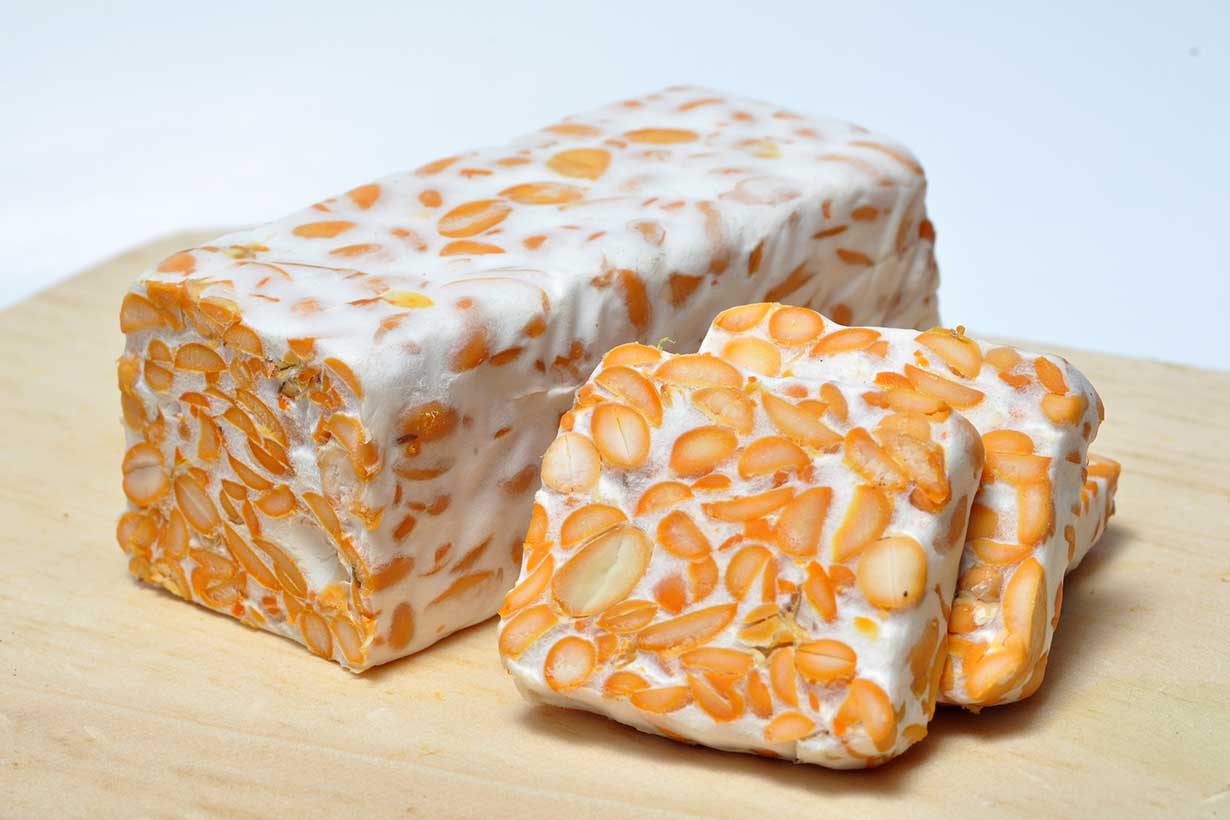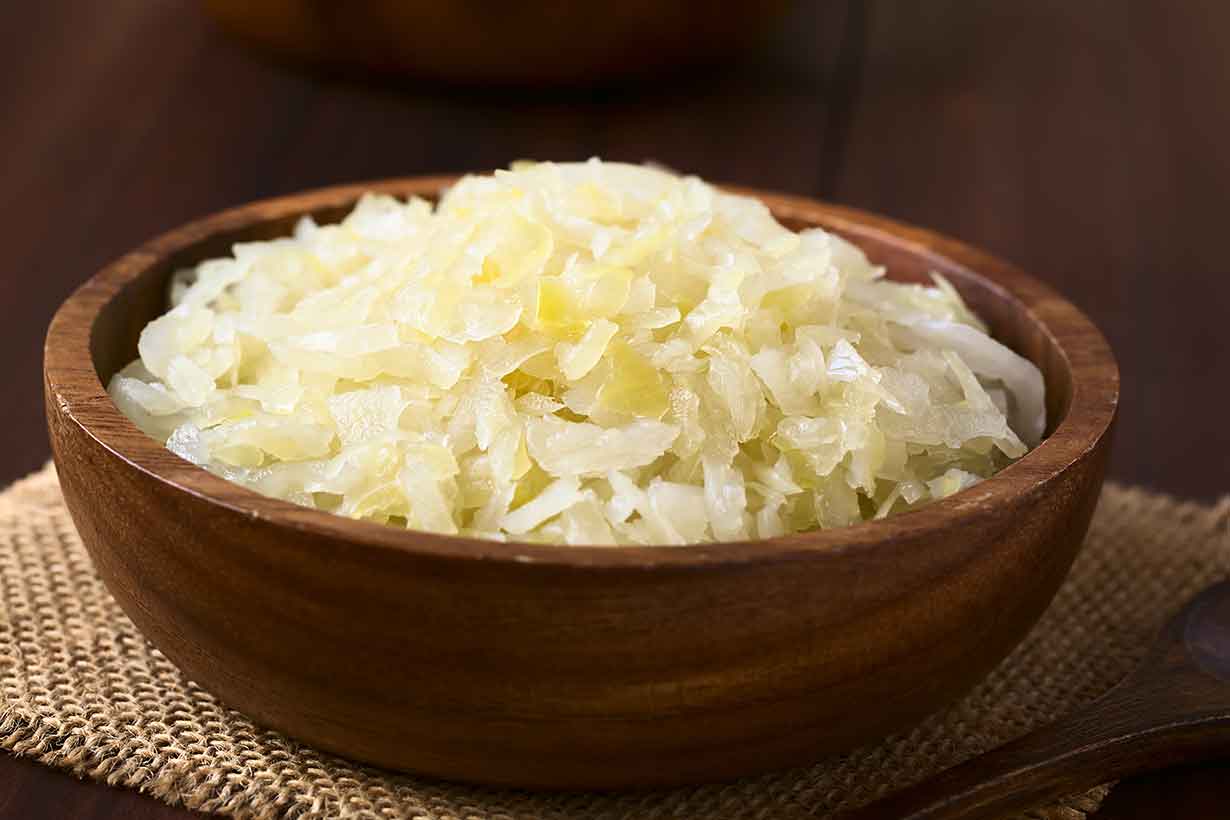Natto is a traditional Japanese dish composed of fermented soybeans.
The taste of this pungent dish splits opinion, but it is incredibly popular in its homeland.
One reason for this is the wide range of important (and unique) nutrients that natto provides.
In this article, we look at precisely what natto is, how its made, and the benefits it may have.
What is natto?

Natto is a type of fermented soy made by the Lacto-fermentation of soybeans.
The first step in this production process is to collect the soybeans, wash them, and then soak them in water for up to one day.
After this, the soybeans are steamed in a pressure cooker, which softens the beans and makes them easier to ferment.
Following the steaming process, the soybeans are mixed together with a starter culture called Bacillus subtilis var. natto.
The soybeans are then left to ferment for around 24 hours at a temperature of 38-42°C (100-108°F).
After this fermentation, the natto is left to mature at a temperature approximately 5°C (41°F) below room temperature.
A complete and more in-depth guide to natto’s production process is available here, courtesy of Japan Natto Cooperative Society.
Taste and texture
Natto has a unique and somewhat slimy texture that puts many people off sampling the dish.
The fermented soybeans also produce stretchy strings when they move, which look similar to the strings that hang off melted mozzarella cheese.
Additionally, natto has a strong and pungent smell that some people dislike.
Despite this, the actual flavor is quite bland, but with a slightly bitter touch.
Perhaps for these reasons, natto usually comes packaged with small sachets of soy sauce and mustard.
When it comes to the taste of natto, it seems that people either love it or hate it. That said, in natto’s homeland of Japan, even some of those who dislike the dish apparently still eat it for the nutritional benefits.
For those that prefer a milder flavor, it might be worth looking into miso, which is another fermented soy food.
Natto is high in protein and fiber
Two of the main nutritional benefits that natto offers come from its protein and fiber content.
As shown in the following table, natto is an excellent source of these two nutrients. The nutritional values come from the USDA’s FoodData Central database (1).
| Calories/Nutrient | Amount |
|---|---|
| Calories | 211 kcal |
| Carbohydrates | 12.7 g |
| Fiber | 5.4 g |
| Sugars | 4.9 g |
| Fat | 11.0 g |
| Saturated | 1.6 g |
| Monounsaturated | 2.4 g |
| Polyunsaturated | 6.2 g |
| Omega-3 | 0.7 g |
| Omega-6 | 5.5 g |
| Protein | 19.4 g |
With almost 20 grams of protein per 100 grams, natto is an excellent source of protein.
Furthermore, almost half the carbohydrate content of natto comes from fiber.
An excellent source of vitamins and minerals
In addition to being rich in protein and fiber, natto also offers significant amounts of vitamins and minerals.
According to the USDA, here are the essential nutrients in every 100 grams of natto (1):
Vitamins
- Vitamin K1: 19% DV
- Riboflavin (B2): 15% DV
- Vitamin C: 14% DV
- Thiamin (B1): 13% DV
- Choline: 10% DV
- Vitamin B6: 8% DV
- Pantothenic acid (B5): 4% DV
- Folate: 2% DV
It is also worth noting that natto contains a substantial amount of vitamin K2, but this vitamin is rarely listed on nutritional databases for food.
We will examine the vitamin K2 content later in the article.
Minerals
- Copper: 74% DV
- Manganese: 67% DV
- Iron: 48% DV
- Zinc: 28% DV
- Magnesium: 27% DV
- Calcium: 17% DV
- Potassium: 16% DV
- Selenium: 16% DV
- Phosphorus: 14% DV
- Sodium: 0.3% DV
As shown above, natto contains high concentrations of several essential minerals, particularly copper, manganese, iron, zinc, and magnesium.
Natto may have benefits for gastrointestinal health
Natto contains Bacillus subtilis, a bacterium that research has shown can improve the growth of intestinal lactobacilli (2).
Lactobacilli colonize the gut, and they are part of the human microbiota. Lactobacillus species are sometimes referred to as ‘beneficial gut bacteria’ and they have a range of potential health benefits (3).
One such benefit of lactobacillus species is that they produce lactic acid, which can help to inhibit pathogenic bacteria infection. These Lactobacillus strains also appear to form barriers to help protect the intestinal epithelium against bacterial invasion (4, 5).
In a randomized controlled trial featuring 100 participants aged 60-74, supplementation with Bacillus subtilis also appeared to stimulate immune response and increase resistance to infectious disease (6).
These effects have been seen with other sources of fermented soy too, such as tempeh.
Natto is a significant source of vitamin K2
Vitamin K2 is an interesting nutrient that scientists are still learning more about.
There are numerous forms of vitamin K2, but there are two primary vitamin K2 compounds found within food (7):
- Menaquinone-4 (MK-4)
- Menaquinone-7 (MK-7)
Animal foods such as liver, cheese, and egg yolks tend to be the best form of MK-4, whereas natto is by far the best source of MK-7.
Natto contains more absolute amounts of vitamin K2 than any other food. In this regard, research suggests that natto provides anywhere from 775 mcg to 1298 mcg of vitamin K2 per 100 grams (10, 11, 12).
Furthermore, the form of vitamin K2 found within natto—menaquinone-7—raises plasma levels of vitamin K more effectively (and for longer) than either vitamin K1 or menaquinone-4 (7).
For more vitamin K2 options, the Korean dish cheonggukjang is another fermented soy dish that contains large amounts of this vitamin.
May support cardiovascular health
It is thought that vitamin K2 may play a potential role in lowering the risk of cardiovascular disease. This belief comes from research suggesting that vitamin K helps to prevent calcium deposition in the arteries, and instead direct it to the bone (13, 14).
In the Rotterdam Study, a large observational study that followed 4807 participants, there was a statistically significant association between menaquinone intake and reduced cardiovascular risk.
To be specific, participants consuming more than 32.7 mcg of vitamin K2 per day had a 50% lower risk of mortality from arterial calcification (15).
On this note, 32.7 mcg of vitamin K2 is equivalent to as little as one teaspoon of natto.
May potentially support bone health
As previously mentioned, the vitamin K2 found within natto may help direct calcium to the skeletal system (13, 14).
It is perhaps for this reason that natto intake is also associated with increased bone mineral density.
For instance, one study demonstrated that, in a community of 1,662 Japanese men, men with greater natto intake had significantly higher bone mineral density (15).
In further research, the Japanese Population-Based Osteoporosis Study (JPOS), tracked 944 Japanese women for three years and analyzed how their bone mineral density changed over the period (16).
In postmenopausal women, the results demonstrated statistically significant associations between greater natto intake and lower levels of bone mineral density loss. These associations were only seen with natto, and they did not exist for other soy products such as tofu.
Randomized controlled trials
Randomized controlled trials investigating the effects of menaquinone-7, the form of vitamin K2 found in natto, have shown mixed results.
In one study, 244 healthy postmenopausal women supplemented with either 180 mcg of menaquinone-7 or placebo for three-years. The results demonstrated that MK-7 supplementation appeared to decrease age-related bone mineral density loss (17).
However, another randomized controlled trial found that, in 334 female participants, natto-based vitamin K2 supplementation at 360 mcg per day had no effect on bone mineral density over one year (18).
How to eat natto
For those interested in trying natto, it can be confusing knowing what to do with it.
Natto typically comes in a small packet, which tends to be around 1.5 oz (40 grams) in size.
Inside each pack, there will be two little sachets: one is mustard, and the other will be soy sauce.
Since some people eat natto like a “supplement,” it’s possible to eat it alone.
However, there are also many different ways to consume natto, and there are numerous recipes out there.
In Japan, natto usually features for breakfast. A traditional way to eat it is to top a bowl of white rice with a fried egg and natto, add some pieces of dried seaweed, and then mix everything together.
There are numerous other natto recipe ideas available here.
It’s possible to make natto at home
Natto can be relatively expensive, and shopping around at Asian markets usually provides the best deals.
However, it is also possible to make natto at home, and various ‘home natto kits’ are available for this purpose.
Making this fermented dish at home involves a bit of effort, but it can save money since unlike natto, regular soybeans are relatively cheap.
For more information, see this guide to making natto using a regular oven.
For those who prefer less effort, the process can be simplified by using an electronic fermenting pot.
Final Thoughts
Although natto probably won’t win any awards for taste, it’s a versatile ingredient, and it offers a lot nutritionally.
Overall, there are plenty of good reasons to include natto in the diet.
Among these, natto is the best dietary source of vitamin K2, and it’s full of protein, fiber, and numerous essential nutrients.





